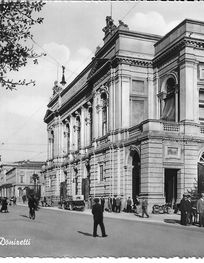
Bergamo: A Hidden Gem Nestled in the Italian Alps
Discover Bergamo, a captivating blend of medieval charm and modern vitality, nestled in the picturesque Lombardy region of northern Italy.
Bergamo, a charming city located in the Lombardy region of northern Italy, is a place where medieval history and modern life beautifully intertwine. Divided into two distinct parts, the Città Alta (Upper Town) and the Città Bassa (Lower Town), Bergamo offers a rich tapestry of experiences for every traveler. The Upper Town, perched atop a hill, is a labyrinth of cobblestone streets, ancient buildings, and stunning views. The Lower Town, on the other hand, is a bustling hub of contemporary Italian culture, with chic shops, gourmet restaurants, and lively piazzas. One of the most captivating features of Bergamo is its well-preserved Venetian walls, which encircle the Upper Town. These 16th-century fortifications offer a sense of stepping back in time as you walk along them, enjoying panoramic views of the surrounding countryside and the city below. Within the walls, you'll find a plethora of historic landmarks, including the Piazza Vecchia, a beautiful square surrounded by medieval and Renaissance architecture, and the Basilica di Santa Maria Maggiore, an exquisite church known for its ornate interiors and stunning frescoes. Beyond its historical allure, Bergamo is also a gateway to the natural beauty of the Italian Alps. Just a short drive away, you can explore scenic hiking trails, picturesque lakes, and charming mountain villages. Whether you're a history buff, a nature lover, or simply seeking an authentic Italian experience, Bergamo offers a delightful escape from the more crowded tourist destinations in Italy.
Local tips in Bergamo
- Take the funicular to the Upper Town for stunning views and easier access to historical sites.
- Visit the Città Alta early in the morning or late in the afternoon to avoid crowds.
- Try the local specialty, casoncelli, a type of stuffed pasta, at one of the city's traditional trattorias.
- Wear comfortable shoes as Bergamo's cobblestone streets can be uneven and hilly.
- Check out the local markets in the Lower Town for fresh produce and unique souvenirs.
Neighbourhoods in Bergamo
Bergamo: A Hidden Gem Nestled in the Italian Alps
Bergamo, a charming city located in the Lombardy region of northern Italy, is a place where medieval history and modern life beautifully intertwine. Divided into two distinct parts, the Città Alta (Upper Town) and the Città Bassa (Lower Town), Bergamo offers a rich tapestry of experiences for every traveler. The Upper Town, perched atop a hill, is a labyrinth of cobblestone streets, ancient buildings, and stunning views. The Lower Town, on the other hand, is a bustling hub of contemporary Italian culture, with chic shops, gourmet restaurants, and lively piazzas. One of the most captivating features of Bergamo is its well-preserved Venetian walls, which encircle the Upper Town. These 16th-century fortifications offer a sense of stepping back in time as you walk along them, enjoying panoramic views of the surrounding countryside and the city below. Within the walls, you'll find a plethora of historic landmarks, including the Piazza Vecchia, a beautiful square surrounded by medieval and Renaissance architecture, and the Basilica di Santa Maria Maggiore, an exquisite church known for its ornate interiors and stunning frescoes. Beyond its historical allure, Bergamo is also a gateway to the natural beauty of the Italian Alps. Just a short drive away, you can explore scenic hiking trails, picturesque lakes, and charming mountain villages. Whether you're a history buff, a nature lover, or simply seeking an authentic Italian experience, Bergamo offers a delightful escape from the more crowded tourist destinations in Italy.
When is the best time to go to Bergamo?
Iconic landmarks you can’t miss
Porta San Giacomo
Discover the timeless beauty of Porta San Giacomo, an iconic historical landmark in Bergamo, Italy, offering breathtaking views and rich cultural heritage.
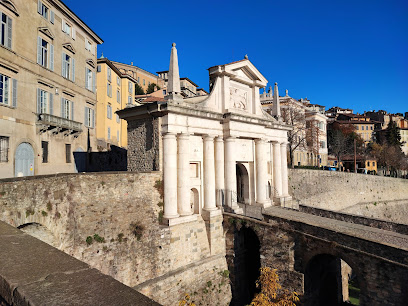
Piazza Vecchia Bergamo Alta
Explore the historical beauty of Piazza Vecchia, the heart of Bergamo Alta, where architecture, culture, and Italian charm come together.
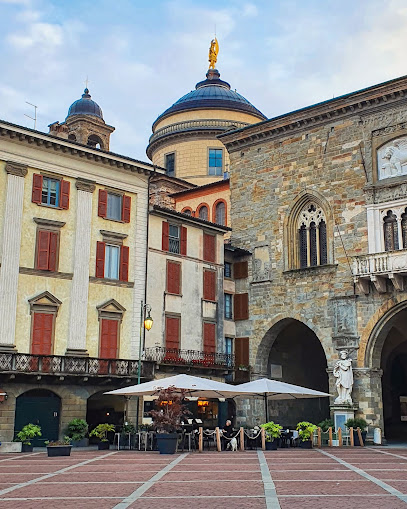
Basilica di Santa Maria Maggiore
Explore the breathtaking Basilica di Santa Maria Maggiore in Bergamo, an architectural marvel blending Romanesque and Baroque styles with a rich history.
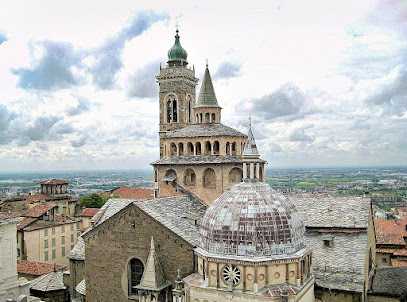
Civic Museum of Natural Sciences in Bergamo
Explore the Civic Museum of Natural Sciences in Bergamo for an engaging journey through nature's wonders, showcasing biodiversity and fascinating exhibits.
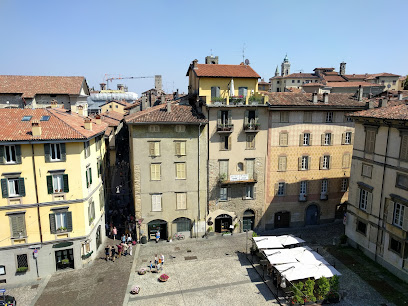
Mura Veneziane-Patrimonio UNESCO
Explore the stunning Venetian Walls of Bergamo, a UNESCO World Heritage site blending rich history with breathtaking views.
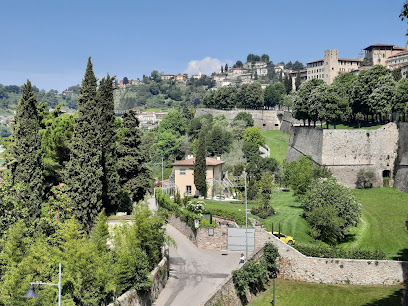
Bergamo Cathedral
Explore the breathtaking Bergamo Cathedral, a stunning blend of history, art, and spirituality in Italy's enchanting city of Bergamo.
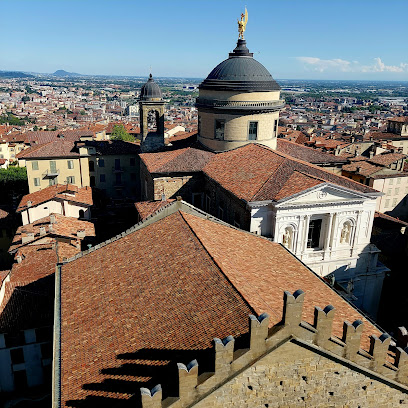
Palazzo e Giardini Moroni
Discover the cultural gem of Palazzo e Giardini Moroni, where art meets nature in the heart of Bergamo, Italy.
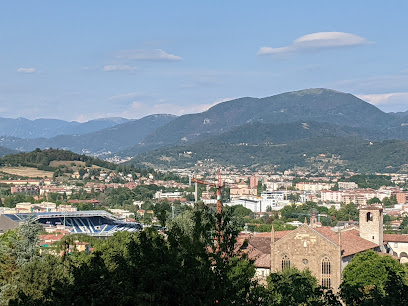
Rocca di Bergamo
Discover the breathtaking Rocca di Bergamo, a historical fortress offering stunning views, rich history, and lush park surroundings perfect for every traveler.
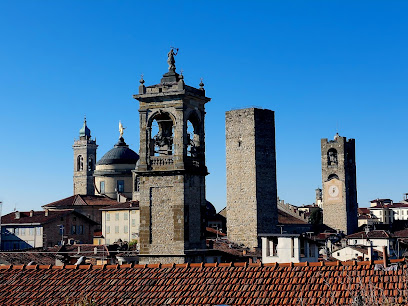
Campanone
Discover Bergamo's iconic Campanone, a historical landmark offering stunning views and a glimpse into the city's rich heritage.
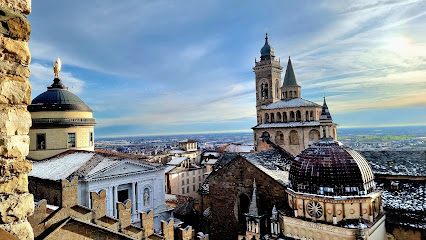
Colleoni Chapel
Discover the Colleoni Chapel, a Renaissance masterpiece in Bergamo, showcasing stunning architecture and rich history in Italy's cultural heart.
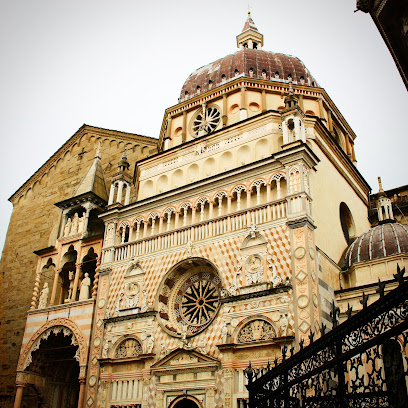
Monument To Partisan
Discover the Monument to Partisan in Bergamo, a striking historical landmark honoring the spirit of resistance and freedom in Italy's rich history.
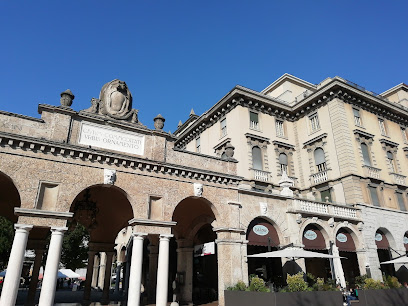
San Giovanni Casemate
Explore the stunning architecture and rich history of San Giovanni Casemate, a must-visit landmark in Bergamo offering breathtaking views.
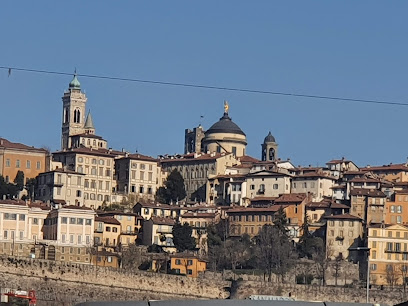
Piazza Mercato delle Scarpe
Experience the vibrant atmosphere and rich history of Piazza Mercato delle Scarpe, a must-see landmark in the heart of Bergamo, Italy.
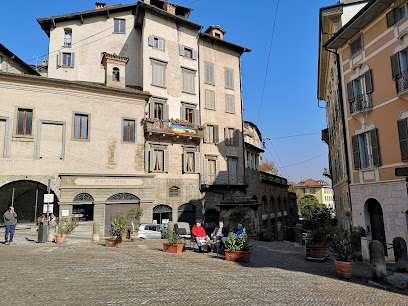
Torre Castello San Vigilio
Discover Torre Castello San Vigilio, a historical gem in Bergamo, offering stunning views and rich medieval heritage in the heart of Italy.
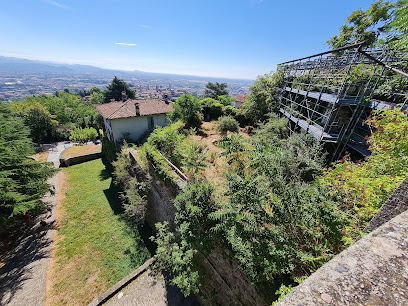
Monumento a Vittorio Emanuele II
Discover the Monumento a Vittorio Emanuele II in Bergamo - a historical landmark celebrating Italy's unity and rich heritage amidst stunning architectural beauty.
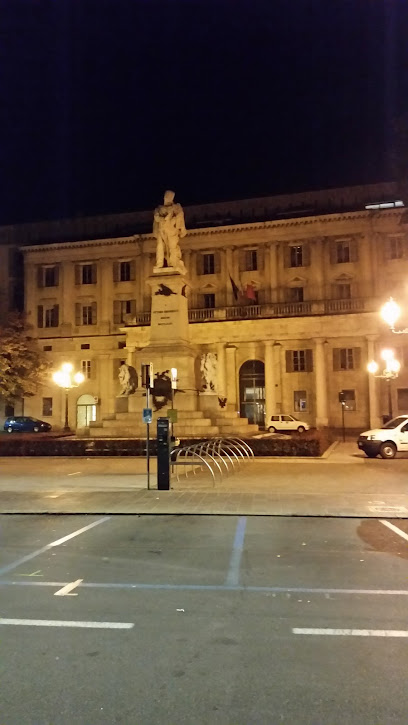
Unmissable attractions to see
Duomo di Milano
Explore the breathtaking Duomo di Milano, a Gothic masterpiece that showcases stunning architecture, rich history, and panoramic views of Milan.
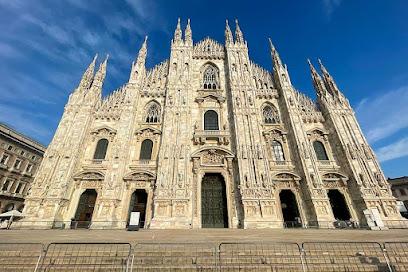
Galleria Vittorio Emanuele II
Explore Milan's Galleria Vittorio Emanuele II, a stunning architectural masterpiece featuring luxury shopping, dining, and rich cultural history in the heart of the city.
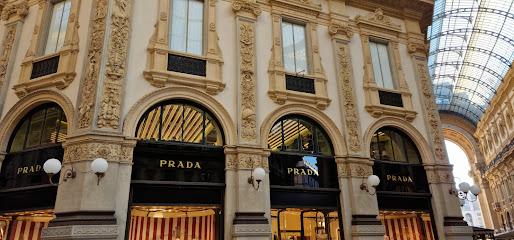
Sforzesco Castle
Explore Sforzesco Castle, a historical landmark in Milan, showcasing rich art, stunning architecture, and beautiful gardens for an unforgettable experience.
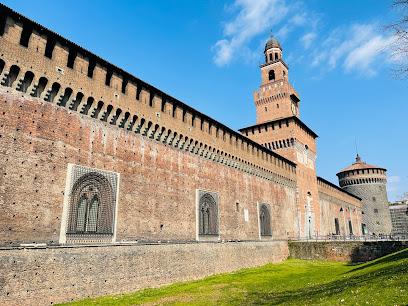
Parco Sempione
Explore the serene beauty of Parco Sempione, Milan's urban park featuring lush gardens, historic landmarks, and vibrant cultural events.
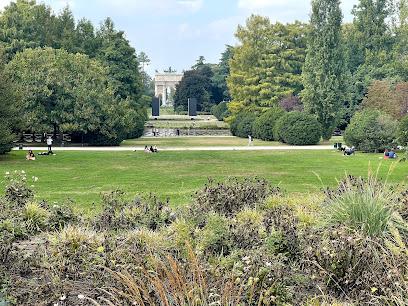
Teatro alla Scala
Discover the iconic Teatro alla Scala, a masterpiece of performing arts in Milan, where history, culture, and music converge in breathtaking performances.
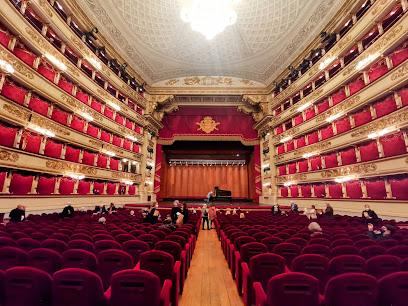
Pinacoteca di Brera
Explore the artistic treasures of the Pinacoteca di Brera, a premier art gallery in Milan showcasing masterpieces from the Italian Renaissance and beyond.
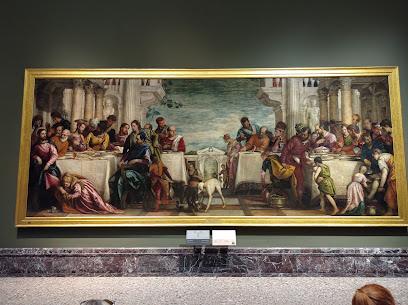
Leonardo da Vinci Museum of Science and Technology
Explore the intersection of art and science at the Leonardo da Vinci Museum of Science and Technology in Milan, where innovation meets history.
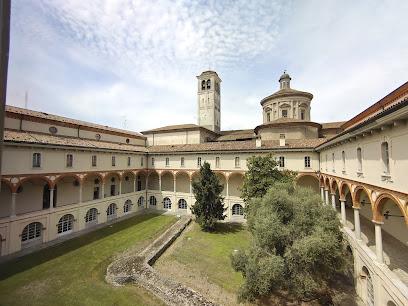
Indro Montanelli Gardens
Discover the tranquility of Indro Montanelli Gardens in Milan, where nature meets culture in a stunning urban oasis.
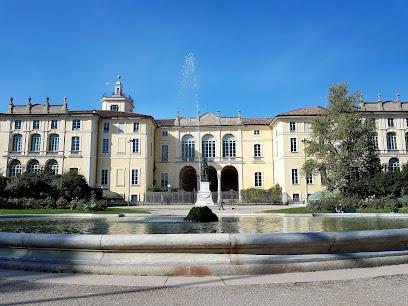
Palazzo Reale di Milano
Explore the exquisite art and rich history at Palazzo Reale di Milano, a premier destination for art lovers and cultural enthusiasts in the heart of Milan.

Cattedrale di Santa Maria Assunta - Duomo di Como
Explore the stunning Cattedrale di Santa Maria Assunta, a Gothic masterpiece in Como, Italy, that enchants visitors with its history and architectural beauty.

Castello di Brescia
Explore the stunning Castello di Brescia, a historical fortress offering breathtaking views and rich cultural experiences in the heart of Italy.
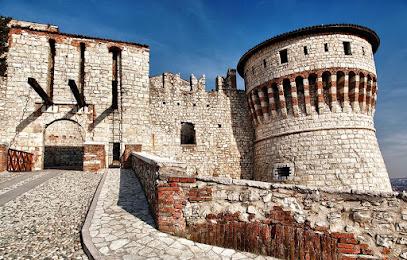
Naviglio Grande
Experience the vibrant atmosphere of Naviglio Grande in Milan, where history, culture, and culinary delights meet along the picturesque canal.
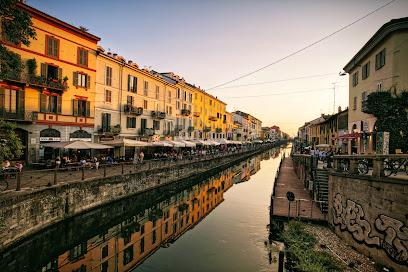
Basilica di Santa Maria delle Grazie
Discover the artistic and historical wonder of the Basilica di Santa Maria delle Grazie, home to Da Vinci's 'The Last Supper' in the heart of Milan.

Basilica of Sant'Ambrogio
Discover the Basilica of Sant'Ambrogio: A stunning Romanesque church in Milan, rich in history and architectural beauty.
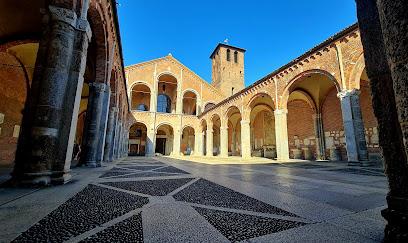
Orrido di Bellano
Discover the breathtaking beauty of Orrido di Bellano, a stunning gorge with cascading waterfalls and dramatic rock formations in Italy.
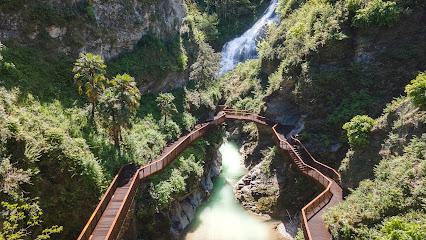
Essential places to dine
Da Mimmo Bergamo Alta
Experience authentic Italian dining at Da Mimmo in Bergamo Alta, where exquisite pizzas and traditional dishes await in a charming atmosphere.
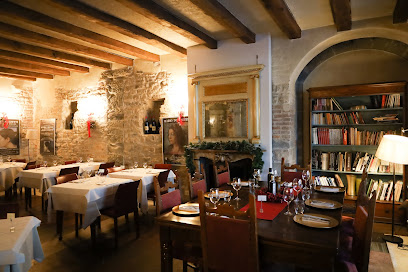
Da Giuliana
Experience the essence of Italy at Da Giuliana in Bergamo - where every dish tells a story and every bite is a delight.
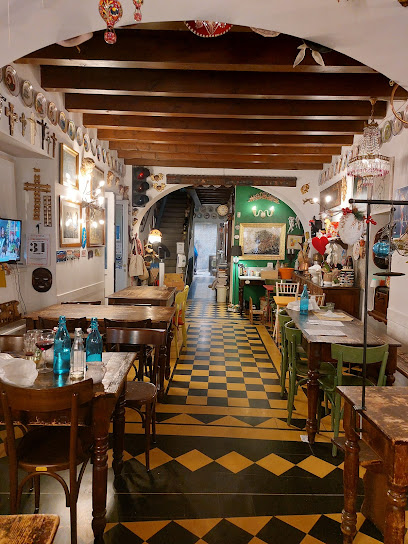
Baretto
Discover Baretto in Bergamo: A delightful restaurant offering authentic Italian cuisine and stunning views.
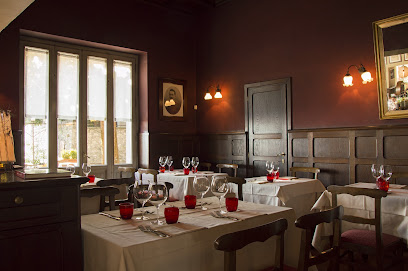
Mimì • La Casa dei Sapori
Discover authentic Italian flavors at Mimì • La Casa dei Sapori in Bergamo - where every meal is a celebration of tradition and taste.
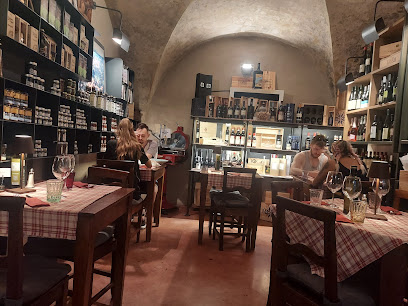
Trattoria Parietti
Experience the essence of Italy at Trattoria Parietti in Bergamo—where authentic flavors meet warm hospitality.
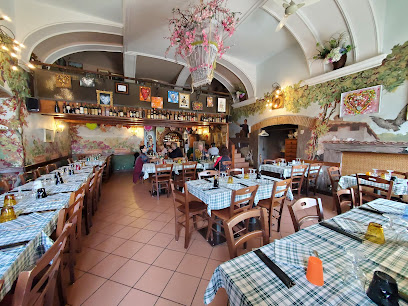
Bacco Matto
Discover authentic Italian flavors at Bacco Matto, Bergamo's premier chophouse restaurant known for its exceptional cuisine and inviting atmosphere.
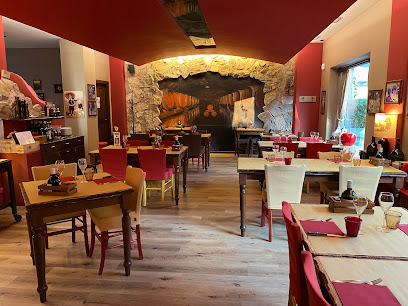
Osteria Della Dogana
Discover authentic Italian flavors at Osteria Della Dogana in Bergamo – a must-visit destination for food lovers seeking Mediterranean delights.
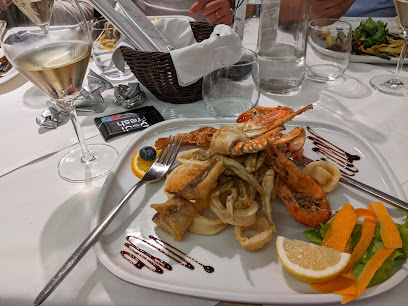
Al Bacio Restaurant & Pizza
Experience the best of Italian cuisine at Al Bacio Restaurant & Pizza in Bergamo – where seafood meets tradition in every delicious bite.

Taverna Valtellinese
Discover authentic Italian flavors at Taverna Valtellinese in Bergamo – where every dish tells a story.
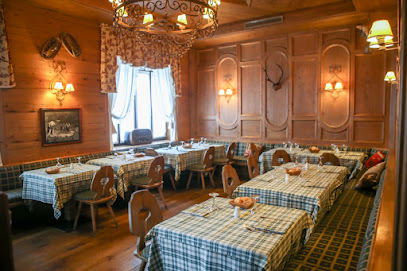
Ristorante Pasta & Basta
Experience authentic Italian flavors at Ristorante Pasta & Basta in Bergamo - where fresh pasta meets warm hospitality.
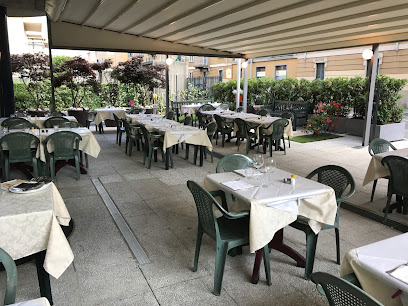
Ristorante la Tana
Experience authentic Italian flavors at Ristorante la Tana in Bergamo, where exquisite cuisine meets an extensive wine selection.

La Ciotola Restaurant
Experience authentic Italian cuisine at La Ciotola Restaurant in Bergamo—where every dish tells a story of tradition and flavor.

Osteria Risi.co
Experience authentic Italian cuisine in Bergamo at Osteria Risi.co - where tradition meets flavor in every dish.
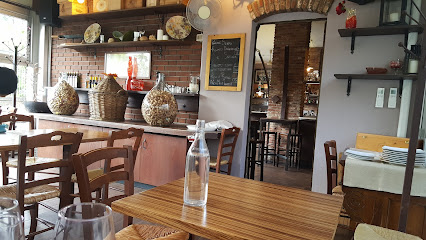
Tijuana
Discover the rich flavors of Argentinian cuisine at Tijuana, a premier chophouse restaurant in Bergamo, perfect for food enthusiasts.
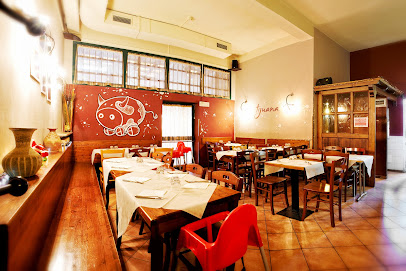
Vineria Cozzi
Discover authentic Italian flavors at Vineria Cozzi - a culinary gem in Bergamo featuring exquisite cuisine and an exceptional wine selection.
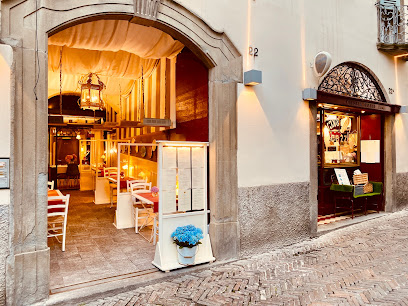
Markets, malls and hidden boutiques
COIN
Discover the essence of Italian fashion at COIN in Bergamo, your ultimate destination for clothing, cosmetics, and accessories.
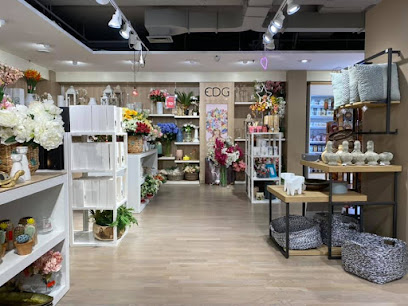
Flying Tiger Copenhagen
Explore Flying Tiger Copenhagen in Bergamo for an unforgettable shopping experience filled with unique gifts and affordable treasures.

Legami Concept Store
Discover the Legami Concept Store in Bergamo - a charming gift shop for unique books, stationery, and quirky Italian gifts.
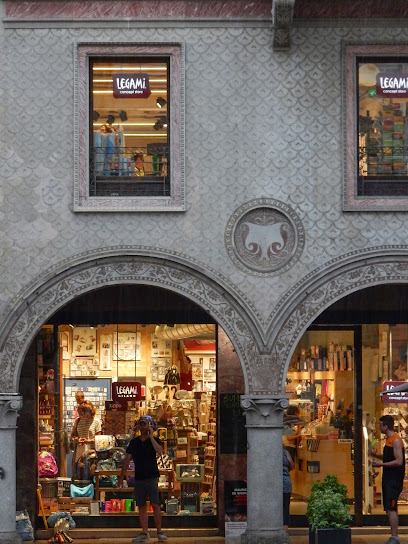
Recycle Garage
Explore a unique vintage clothing store in Bergamo offering eclectic finds, collectibles, and vinyl records - a true treasure trove for enthusiasts.
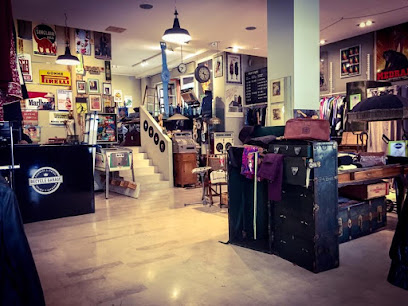
Barazzoni Outlet Bergamo
Explore the finest Italian home goods at Barazzoni Outlet Bergamo – a shopping haven for unique kitchenware and stylish home accessories.
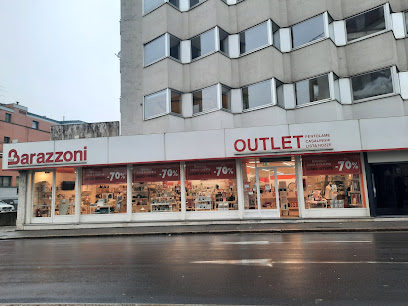
TFNY Boutique
Discover the latest fashion trends at TFNY Boutique in Bergamo, where style meets elegance for both men and women.
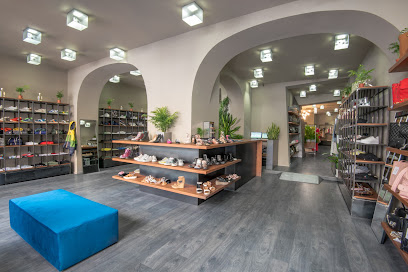
DannyRu Vintage Bergamo
Explore the charm of vintage fashion at DannyRu Vintage in Bergamo, where timeless pieces meet modern styles.

Tiziana Fausti
Discover the elegance of Italian fashion at Tiziana Fausti, Bergamo's luxury clothing store offering a curated selection of high-end garments and accessories.

Evelyne Aymon
Explore Evelyne Aymon, a premier fashion accessories store in Bergamo, where exquisite craftsmanship meets Italian elegance.
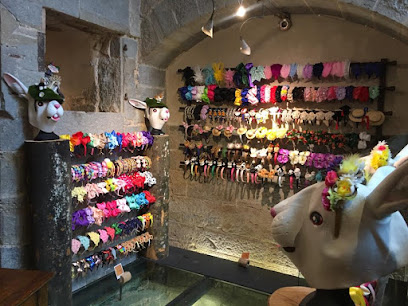
Biffi Boutique Bergamo
Explore the elegance of Biffi Boutique Bergamo, where luxury fashion meets Italian charm in a stunning shopping experience.
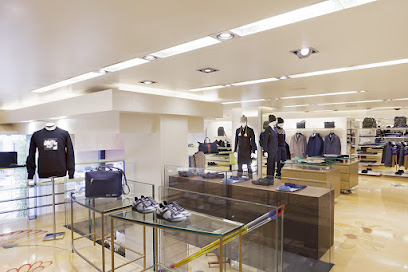
Star Shop Bergamo
Explore the vibrant world of comics at Star Shop Bergamo, where every comic fan finds their next favorite read and collectible.

UomoRe - Bergamo
Explore UomoRe in Bergamo for sophisticated men's fashion that combines elegance with contemporary trends, making it the ultimate shopping destination.
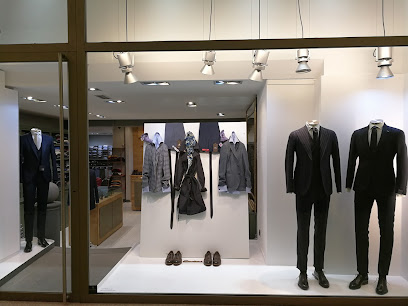
Profilo Bergamo Alta
Discover the stylish world of women's fashion at Profilo Bergamo Alta, where elegance meets modern flair in the heart of Bergamo.
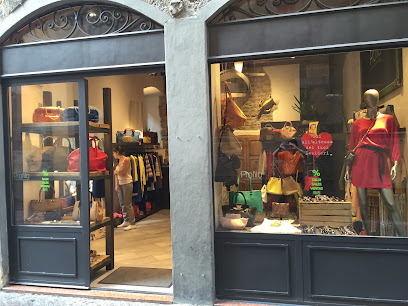
Fili & Gemme Luxury Vintage Shop
Explore the exquisite world of vintage fashion at Fili & Gemme Luxury Vintage Shop in Bergamo, where timeless elegance meets modern style.
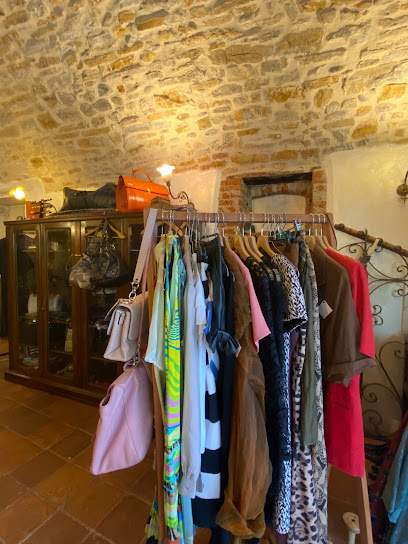
Glamourevintage
Explore Glamourevintage in Bergamo for an eclectic selection of vintage clothing and accessories that promise to elevate your fashion game.

Essential bars & hidden hideouts
Bobino Bar & Restaurant
Experience the vibrant fusion of Italian cuisine and fine wines at Bobino Bar & Restaurant in the heart of Bergamo.
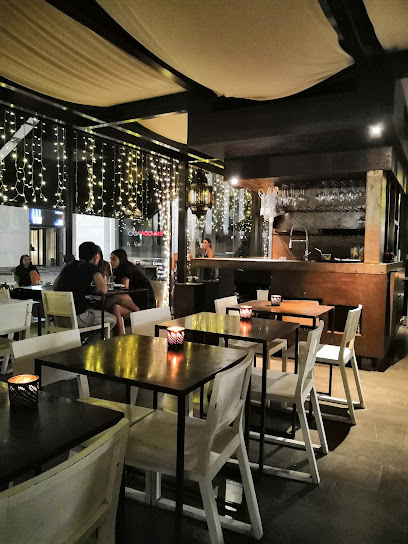
The Ritual Pub
Discover the vibrant atmosphere of The Ritual Pub in Bergamo, where Irish hospitality meets Italian flavors for an unforgettable experience.
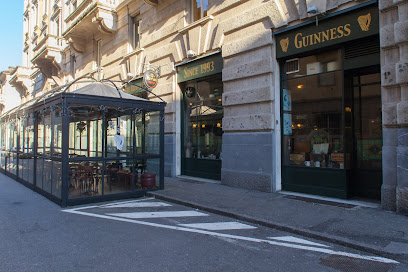
Pub Sant'Orsola
Experience the best of Bergamo's nightlife at Pub Sant'Orsola, where local brews and warm hospitality await.
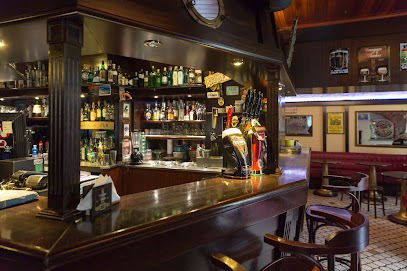
Contest Lounge Bar
Discover the vibrant atmosphere and exquisite cocktails at Contest Lounge Bar, a must-visit spot in Bergamo for an unforgettable night out.
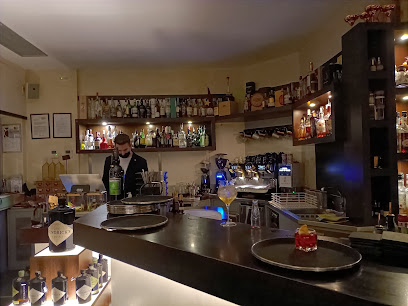
Beach Bar
Experience the vibrant nightlife of Bergamo at Beach Bar, where American flavors meet Italian hospitality in a lively coastal-themed setting.
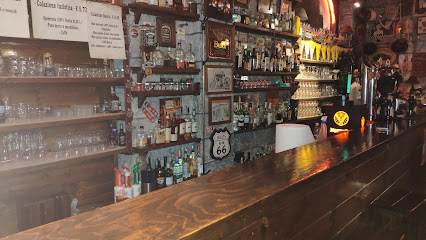
The Tucans Pub
Experience authentic Irish hospitality at The Tucans Pub in Bergamo, offering delicious food, drinks, and a lively atmosphere to unwind.
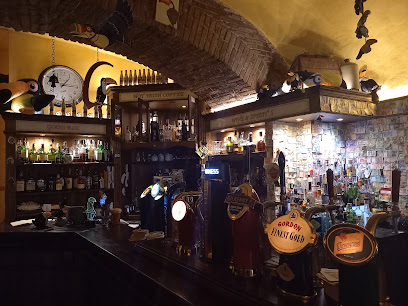
Bar Flora
Discover the charm of Bergamo at Bar Flora, a delightful bar and coffee shop in Piazza Vecchia offering authentic Italian flavors.
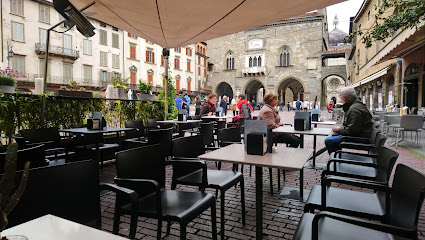
Barrier
Discover Barrier, Bergamo's premier cocktail bar and restaurant offering unique drinks and delectable dishes in a stylish setting.
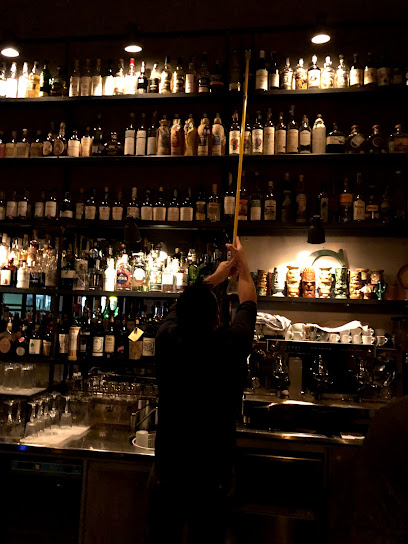
Le Iris
Experience the heart of Italian hospitality at Le Iris, a charming bar and restaurant in the picturesque city of Bergamo.
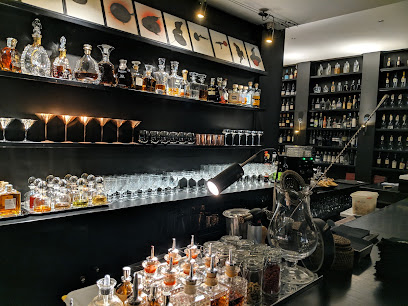
Varadero Jazz Cafe
Immerse yourself in the vibrant music scene of Bergamo at Varadero Jazz Cafe, where live jazz meets delightful drinks in a cozy atmosphere.
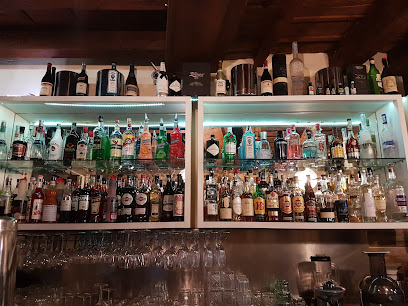
Beer Garage
Experience the vibrant atmosphere and explore a world of craft beers at Beer Garage, Bergamo's premier beer hall and pub.
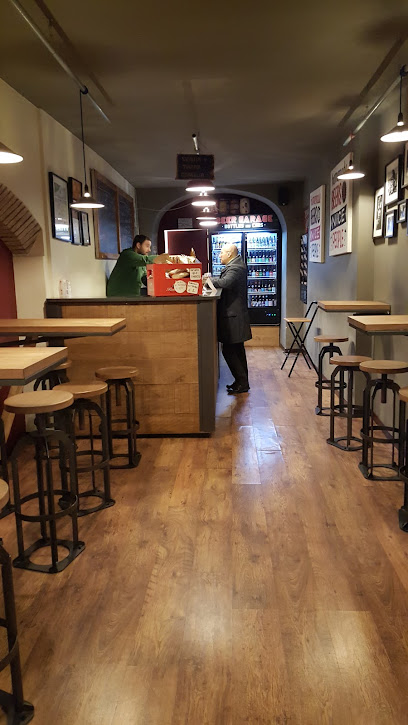
Harlem
Discover Harlem in Bergamo: a vibrant bar and hamburger restaurant serving gourmet burgers and local drinks in a lively atmosphere.
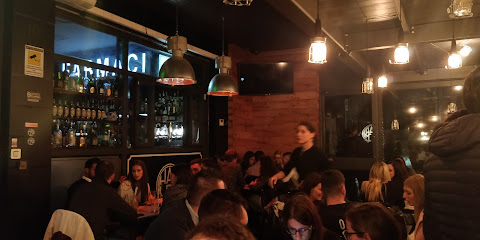
Bar Dell Angelo
Discover the vibrant ambiance of Bar Dell Angelo, a must-visit pub in Bergamo offering local flavors and a welcoming atmosphere.
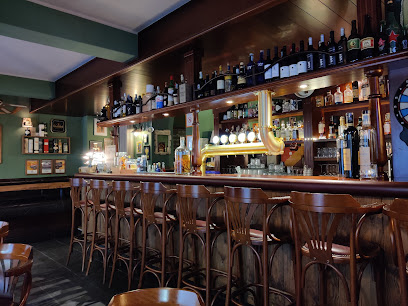
Bar Borsa
Discover Bar Borsa, a charming bar in Bergamo offering delightful drinks and a vibrant atmosphere at Piazza della Libertà.
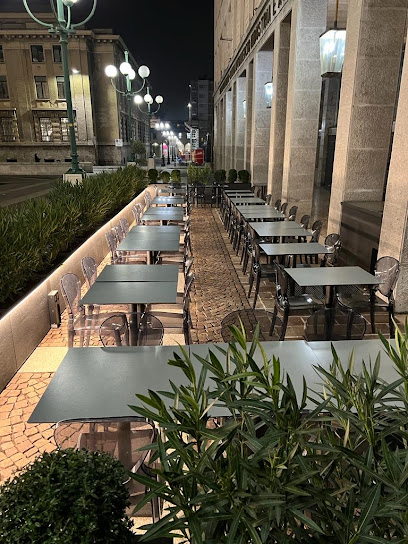
Posto Al Sole Bar
Experience the warmth of Bergamo at Posto Al Sole Bar, where local culture meets delightful beverages in a cozy atmosphere.

Local Phrases
-
- HelloCiao
[chow] - GoodbyeArrivederci
[ah-ree-veh-dehr-chee] - YesSì
[see] - NoNo
[noh] - Please/You're welcomePer favore/Prego
[pehr fah-voh-reh/preh-goh] - Thank youGrazie
[grah-tsyeh] - Excuse me/SorryScusa/Mi dispiace
[skoo-sah/mee dees-pyah-cheh] - How are you?Come stai?
[koh-meh stai] - Fine. And you?Bene. E tu?
[beh-neh. eh too] - Do you speak English?Parli inglese?
[pahr-lee een-gleh-zeh] - I don't understandNon capisco
[non kah-pee-skoh]
- HelloCiao
-
- I'd like to see the menu, pleaseVorrei vedere il menu, per favore
[vor-ray veh-deh-reh eel meh-noo, pehr fah-voh-reh] - I don't eat meatNon mangio carne
[non mahn-joh kahr-neh] - Cheers!Salute!
[sah-loo-teh] - I would like to pay, pleaseVorrei pagare, per favore
[vor-ray pah-gah-reh, pehr fah-voh-reh]
- I'd like to see the menu, pleaseVorrei vedere il menu, per favore
-
- Help!Aiuto!
[ah-yoo-toh] - Go away!Vai via!
[vai vee-ah] - Call the Police!Chiama la Polizia!
[kee-ah-mah lah poh-lee-tsya] - Call a doctor!Chiama un dottore!
[kee-ah-mah oon doht-toh-reh] - I'm lostMi sono perso
[mee soh-no pehr-soh] - I'm illSto male
[stoh mah-leh]
- Help!Aiuto!
-
- I'd like to buy...Vorrei comprare...
[vor-ray kohm-prah-reh] - I'm just lookingSto solo guardando
[stoh soh-loh gwahr-dahn-doh] - How much is it?Quanto costa?
[kwahn-toh koh-stah] - That's too expensiveÈ troppo caro
[eh troh-poh kah-roh] - Can you lower the price?Puoi abbassare il prezzo?
[pwah-ee ahb-bahs-sah-reh eel preh-tsoh]
- I'd like to buy...Vorrei comprare...
-
- What time is it?Che ora è?
[keh oh-rah eh] - It's one o'clockÈ l'una
[eh loo-nah] - Half past (10)Sono le dieci e mezza
[soh-no leh dee-eh-chee eh meh-tzah] - MorningMattina
[maht-tee-nah] - AfternoonPomeriggio
[poh-meh-ree-joh] - EveningSera
[seh-rah] - YesterdayIeri
[yeh-ree] - TodayOggi
[oh-jee] - TomorrowDomani
[doh-mah-nee] - 1Uno
[oo-no] - 2Due
[dweh] - 3Tre
[treh] - 4Quattro
[kwah-troh] - 5Cinque
[cheen-kweh] - 6Sei
[say] - 7Sette
[seht-teh] - 8Otto
[oht-toh] - 9Nove
[noh-veh] - 10Dieci
[dee-eh-chee]
- What time is it?Che ora è?
-
- Where's a/the...?Dov'è un/il...?
[doh-veh oon/eel] - What's the address?Qual è l'indirizzo?
[kwahl eh leen-dee-reet-soh] - Can you show me (on the map)?Puoi mostrarmi (sulla mappa)?
[pwah-ee mohs-trahr-mee (sool-lah mahp-pah)] - When's the next (bus)?Quando passa il prossimo (autobus)?
[kwahn-doh pahs-sah eel prohs-see-moh (ow-toh-boos)] - A ticket (to ....)Un biglietto (per ....)
[oon beel-lyet-toh (pehr)]
- Where's a/the...?Dov'è un/il...?
History of Bergamo
-
Bergamo's origins date back to ancient times when it was founded by the Celtic tribe of the Cenomani. By the 2nd century BC, it became a Roman municipality known as Bergomum. The city was strategically located along important trade routes, which facilitated its growth and prominence in the region.
-
During the Middle Ages, Bergamo became a fortified city with impressive defensive walls. In the 12th century, it fell under the control of the Lombard League and later the Visconti of Milan. The medieval architecture of the Upper Town (Città Alta) remains a testament to this era, with its narrow cobblestone streets and defensive structures.
-
In 1428, Bergamo came under the rule of the Republic of Venice. This period marked a time of prosperity and architectural development. The Venetians constructed the famous Venetian Walls, which still encircle the Città Alta. These walls are a UNESCO World Heritage site and an enduring symbol of Venetian influence.
-
The late 18th century brought significant change to Bergamo as it became part of the Cisalpine Republic under Napoleon Bonaparte. This era saw the dismantling of some of the city's fortifications and the beginning of modern urban planning. Bergamo's integration into the Napoleonic Kingdom of Italy introduced new administrative and social reforms.
-
Bergamo played a pivotal role in the Italian Risorgimento, the movement for Italian unification. In 1859, the city joined the Kingdom of Sardinia, which later became the Kingdom of Italy. Bergamo's citizens actively participated in the struggle for unification, and the city earned the nickname 'Città dei Mille' (City of the Thousand) in honor of the volunteers who joined Giuseppe Garibaldi's expedition.
-
The 20th century saw Bergamo evolve into a thriving industrial and cultural center. The city expanded beyond its historic core, with new neighborhoods and infrastructure. Despite modernization, Bergamo has preserved its rich heritage, blending the old and new seamlessly. Today, it is renowned for its vibrant arts scene, culinary traditions, and historical landmarks.
Bergamo Essentials
-
Bergamo is well-connected by air, road, and rail. The Orio al Serio International Airport (BGY) is only 5 km from the city center and offers numerous international and domestic flights. From the airport, you can take a bus, taxi, or rent a car to reach the city center. If you prefer traveling by train, Bergamo's main railway station is well-connected to Milan, Brescia, and other major cities in Italy. Additionally, the city is accessible via major highways such as the A4, making it convenient for those traveling by car.
-
Bergamo is divided into two main areas: Città Alta (Upper Town) and Città Bassa (Lower Town). Public transportation is efficient and includes buses and funiculars that connect these two areas. The ATB (Azienda Trasporti Bergamo) operates the local bus and funicular services. Taxis are readily available, and ride-sharing services such as Uber are also an option. For those who prefer exploring on foot, many attractions in Città Alta are within walking distance. Renting a bike is another great way to explore the city.
-
The official currency in Bergamo, as in the rest of Italy, is the Euro (€). Credit and debit cards are widely accepted in hotels, restaurants, and shops. However, it's advisable to carry some cash for smaller establishments and markets. ATMs are plentiful throughout the city, making it easy to withdraw money as needed.
-
Bergamo is generally a safe city for tourists. However, like any popular destination, it’s important to be cautious of pickpockets, especially in crowded areas and on public transport. Avoid poorly lit areas at night and be mindful of your belongings. While Bergamo doesn't have specific high-crime neighborhoods targeting tourists, staying vigilant is always a good practice.
-
In case of emergency, dial 112, the European emergency number, for immediate assistance. This number can be used to reach police, medical, and fire services. Bergamo has several hospitals and clinics, including the Ospedale Papa Giovanni XXIII, which is well-equipped to handle medical emergencies. Pharmacies are also available throughout the city for minor health issues. It’s recommended to have travel insurance that covers medical emergencies.
-
Fashion: Do dress stylishly but comfortably. Italians take fashion seriously, so avoid overly casual attire like flip-flops and beachwear when in the city. Religion: Do respect religious customs, especially when visiting churches. Cover your shoulders and knees, and remove hats when entering. Public Transport: Do validate your ticket before boarding buses and funiculars. Don’t eat or drink on public transport. Greetings: Do greet people with a friendly 'Buongiorno' (Good morning) or 'Buonasera' (Good evening). A handshake is common in formal settings. Eating & Drinking: Do try local specialties like polenta and casoncelli. Don’t rush through meals; dining is a leisurely activity in Italy. Also, avoid asking for modifications to traditional dishes.
-
To experience Bergamo like a local, take a stroll through the bustling Piazza Vecchia in Città Alta and enjoy a coffee or aperitivo at one of the many cafes. Visit the local markets, such as the Mercato del Carmine, to purchase fresh produce and artisanal goods. Engage with locals, who are often happy to share insights about the city’s history and culture. Don’t miss a visit to the Rocca di Bergamo for panoramic views of the city. For a unique experience, attend a local festival or event, such as the Donizetti Opera Festival, which celebrates the city's rich musical heritage.
Trending Landmark in Bergamo
-
Porta San Giacomo
-
Piazza Vecchia Bergamo Alta
-
Basilica di Santa Maria Maggiore
-
Civic Museum of Natural Sciences in Bergamo
-
Mura Veneziane-Patrimonio UNESCO
-
Bergamo Cathedral
-
Palazzo e Giardini Moroni
-
Rocca di Bergamo
-
Campanone
-
Colleoni Chapel
-
Monument To Partisan
-
San Giovanni Casemate
-
Piazza Mercato delle Scarpe
-
Torre Castello San Vigilio
-
Monumento a Vittorio Emanuele II
Nearby Cities to Bergamo
-
Things To Do in Milan
-
Things To Do in Lugano
-
Things To Do in Locarno
-
Things To Do in Ascona
-
Things To Do in St. Moritz
-
Things To Do in Verona
-
Things To Do in Parma
-
Things To Do in Arosa
-
Things To Do in Davos
-
Things To Do in Modena
-
Things To Do in Balzers
-
Things To Do in Zermatt
-
Things To Do in Genoa
-
Things To Do in Triesenberg
-
Things To Do in Vaduz


